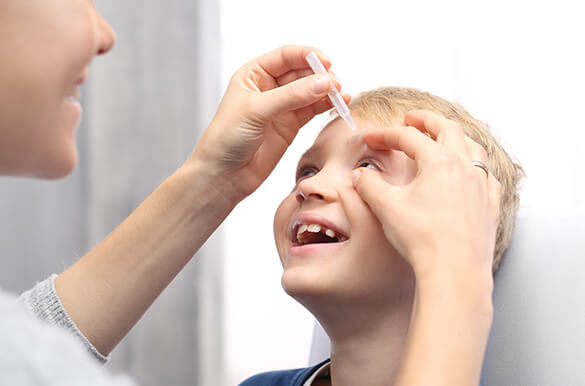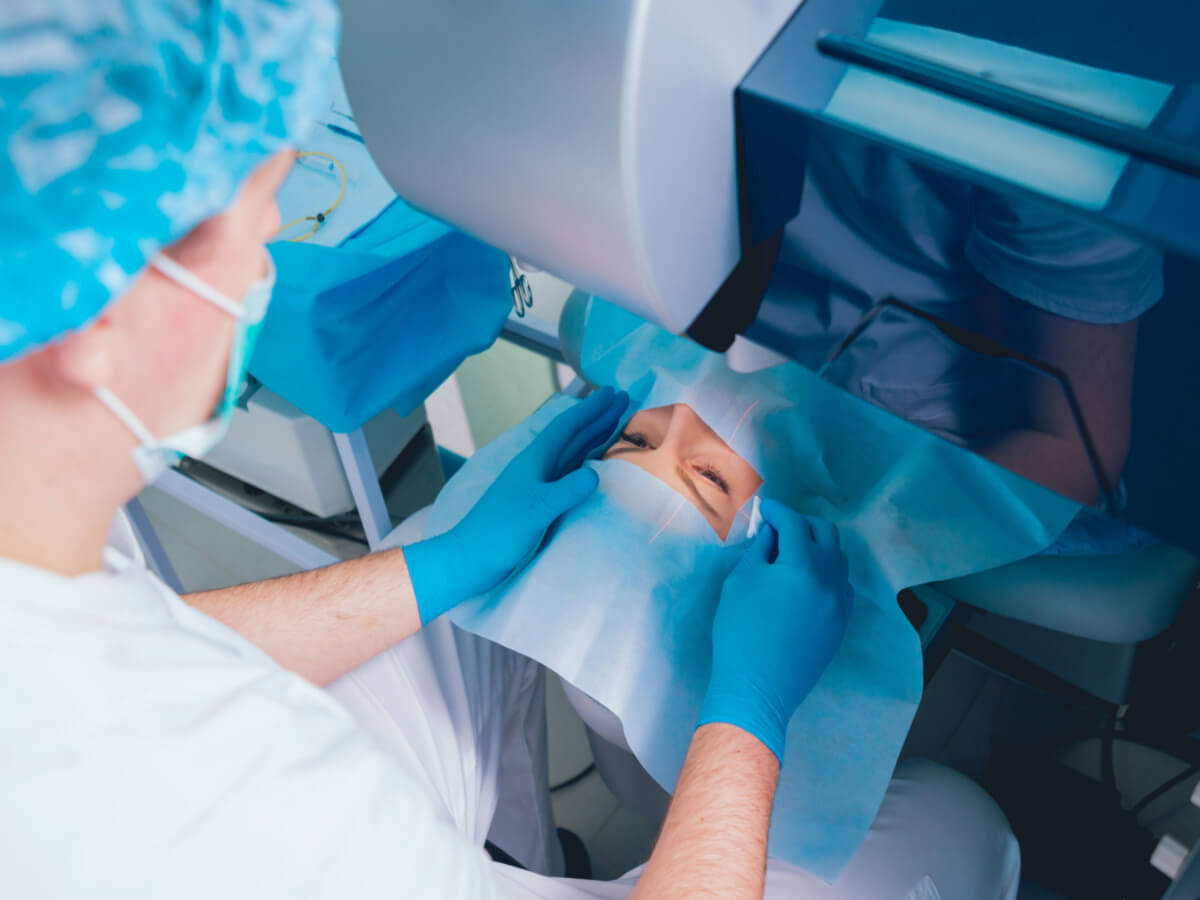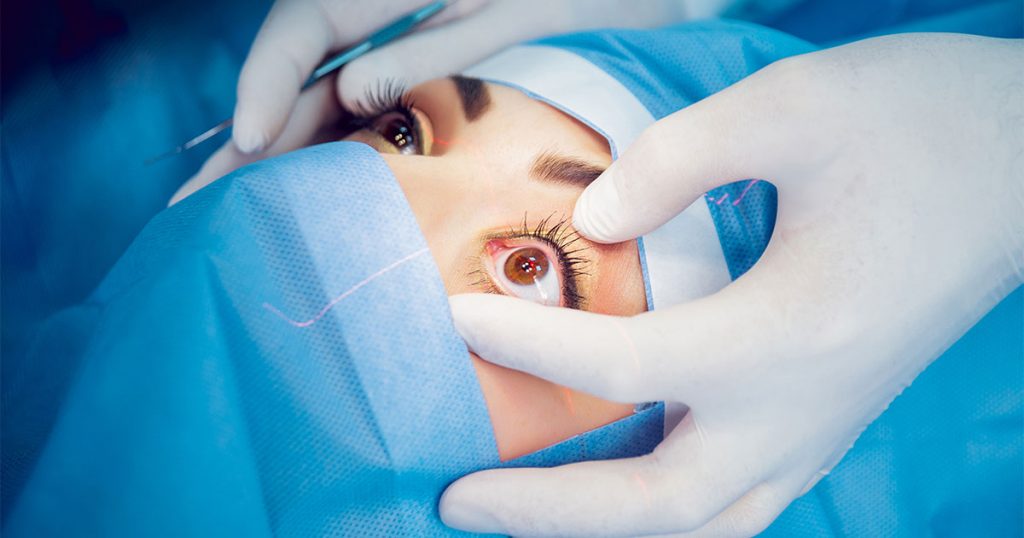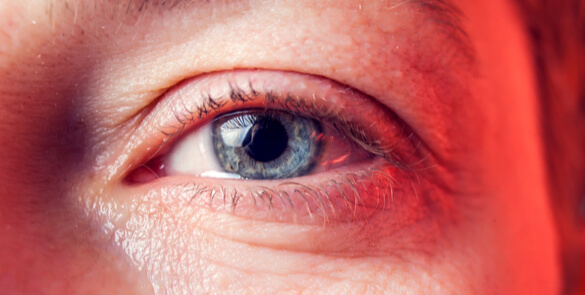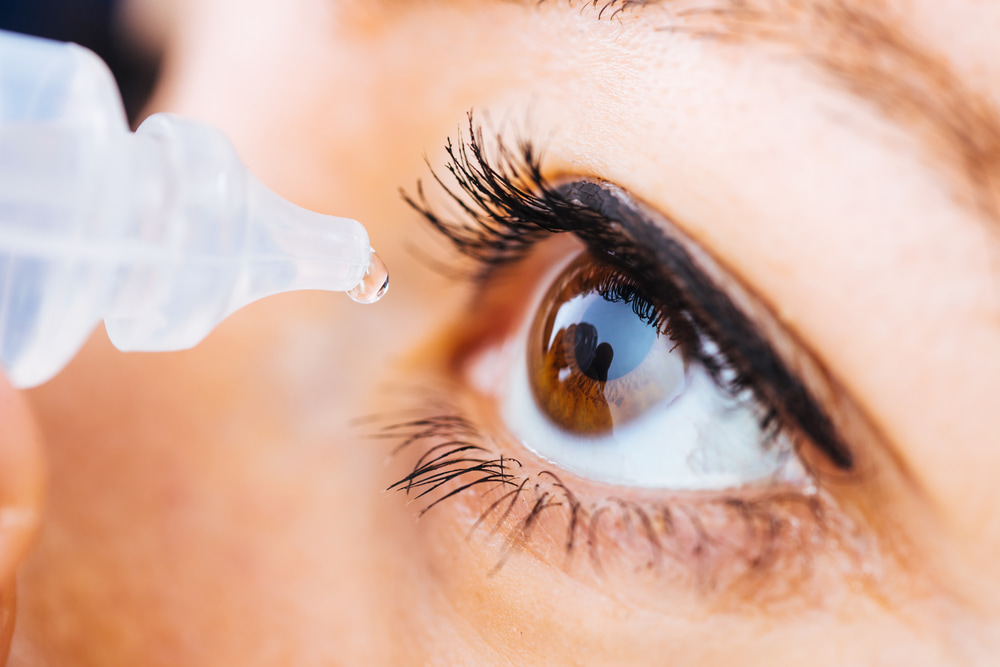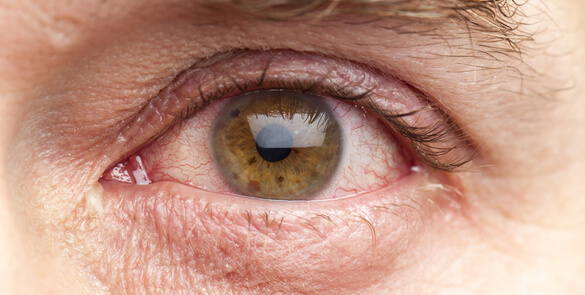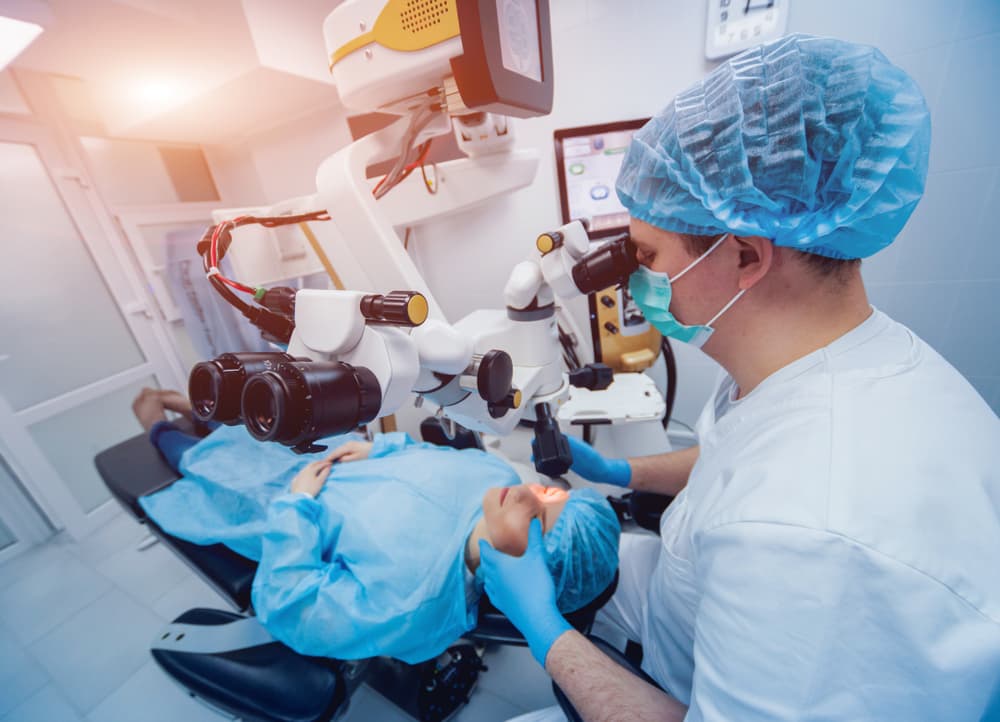Myopia, or short-sightedness, is an eye condition where distant objects appear blurry due to improper light focusing on the retina. While there is no cure, glasses or contact lenses can help.
Recent studies highlight Atropine 0.01% eye drops as an effective myopia treatment to decelerate progression in children. Originally, Atropine 1% is utilised for pupil dilation during eye exams. However, the myopia treatment uses a concentration of 100 times weaker. The exact way Atropine 0.01% hinders myopia progression remains uncertain, but international studies report high success rates. Notably, side effects, less frequent than the clinical dose, can include minor irritation, light sensitivity, and dilated pupils.
This treatment is not a myopia cure but aims to decelerate its advancement. It is essential to wear glasses and administer the drops nightly consistently. There’s no absolute assurance of its efficacy; missed doses might compromise the treatment.
If you are scheduled for a day-case surgery with us, it is crucial to be well-prepared to ensure a smooth and safe surgical experience. From understanding the fasting guidelines to knowing what attire is appropriate, being informed can ease your anxiety and prepare you for a successful procedure.
We strongly recommend downloading our detailed leaflet for a comprehensive set of instructions. It covers everything from when to arrive, what to wear to post-operative care, and what to do in special circumstances like pregnancy or illness. Click the button below to download the full leaflet and prepare for your upcoming surgery.
Your well-being is our priority, and we are here to guide you through every step of your surgical journey. Thank you for entrusting us with your care.
Glasses or contact lenses are prescribed to aid your child’s vision and allow them to see clearly. There is growing evidence in the medical literature to suggest that Atropine 0.01% eye drops can reduce the rate of myopia progression in children.
Atropine 1% is currently used as a diagnostic eye drop in some clinics to dilate the pupils and relax the focusing components of the eye to aid examination. For Myopia management a much lower concentration of Atropine (0.01%) is used which is 100 times weaker than the dose currently used in clinic.
About
A laser iridotomy is generally performed either to lower the eye pressure in chronic narrow angle glaucoma, or to prevent and treat acute angle closure glaucoma (both of which can cause severe and irreversible vision loss if not treated). The treatment is only recommended if the risks to vision from glaucoma outweigh any risks from the treatment itself.
The procedure is done as an outpatient and it is best to have someone along to take you home, as your vision in one or both eyes might be poor for driving or walking, though it isn’t usually badly blurred. We can treat one or both eyes at one sitting. There is no extra preparatory medicine needed on the day before or morning of, but you should take any usual eye drops that were prescribed for daily use. After the preliminary exam, an eye drop of pilocarpine is put into the eye to make the pupil small and the iris thinner. This takes 15-30 minutes. You will get a sensation like sinus pressure, often felt in the eyebrow, and your vision can blur temporarily. The eye is numbed with anesthetic eye drop or ointment and a lens is put on the eye, held by the doctor’s fingers to keep your eyelids out of the way and to magnify the view. You will be sitting up at the instrument called the slit lamp with a chin rest and bright light shining from binoculars that the doctor looks through. You help by keeping the other eye open and staring straight ahead between blinks. It’s OK to blink, since the eye getting treated can’t close with the examining lens in place.
Types
The most commonly used laser is the neodymium: YAG type, which treats the eye so fast that you won’t have a chance to move your eye during laser applications. When the laser fires, you get a sensation that something happened. It’s typically not unpleasant, just a little startling if the doctor doesn’t warn you first. We often need to make several deliveries of laser to produce a hole about one half a millimeter in size, about the size of a ball point pen tip. That’s all it takes to let aqueous flow from behind to in front of the iris and fix the problem. It’s pretty uncommon that you or someone else will see where the hole was made, though if you look closely you’ll later possibly see a black dot where it is. Because the laser is focused down to a point at the iris inside the eye, it doesn’t have concentrated power anywhere in the eye except there, so it doesn’t damage the wall of the eye or anything behind the iris. You won’t have a hole in the outer wall of the eye.
A small number of persons after iridotomy previously reported that they saw an additional line of light around street lights, or, that they see more glare in general. Even those who experienced this glare effect found that it goes away with time. Widely accepted locations for placement of the iridotomy such that the incidence of glare is minimized include at the 3, 9 or 12 o clock positions. Very rarely, debilitating glare may require an operation to close the iridotomy using a stitch.
For the first hour after iris hole treatment, vision is blurred, but it clears quickly. Half an hour after treatment the pressure is checked, since occasionally it rises substantially and needs treatment for a while with drops to make it safe again. No eye patch is used. Some eye surgeons give anti-inflammatory eye drops for a few days. The next visits are one day, one week and one month later. If the laser hole is not open at 4 weeks after the initial treatment, it is retreated, which is typically pretty quick and easy. Making a hole is harder in thicker, brown irises, such as in African- or Asian-derived persons. In these eyes, we can treat with two separate types of lasers in sequence, the first being a continuous wave laser (diode) to thin down the iris, followed by the neodymium:YAG to punch through. About one in ten times in this kind of patient it can take two sessions to make a full hole of the right size, and sometimes the iridotomy may have to be placed at any suitable location to minimize the much higher risk to vision from glaucoma.
Once a laser iris hole is made, it’s open for good. The iris doesn’t heal as do other body tissues, probably because the aqueous fluid that surrounds it contains chemicals that prevent healing under normal circumstances. The exceptions to the no-healing rule are eyes that have new blood vessels growing in them or eyes with inflammatory diseases (neovascular and inflammatory glaucoma). Because the normal situation of no-healing is changed by these processes, laser iris holes in those eyes can close up and are watched more closely.
There is some limited evidence that making a hole in the iris speeds the development of cataract, perhaps because the movement of aqueous is re-routed through the hole and doesn’t uniformly bathe the lens as it normally does. Of course, if the eye develops an acute angle closure crisis because the hole wasn’t made, a cataract is pretty much guaranteed to develop soon. An iris hole, on balance, may wind up preventing more cataract than it might cause if angle closure crisis is avoided.
Depending on the type of glaucoma, laser iridotomy may help facilitate control of the eye pressure, but you may still need to use glaucoma drops long term. In some cases further laser or surgical treatment may be required to control glaucoma, as the iridotomy may be one step in the long term management of the condition. It is important to remember that a laser iridotomy is not done to improve vision or to gain independence from glasses.
Blocked Tear Duct. The tear ducts start at the inner corner of the eye with two small holes in the corner of the eyelids. Each hole is known as a punctum, they lead into small tubes known as canaliculi, which in turn drains into the lacrinal sac. This lies between the corner of your eye and your nose which has a duct at the bottom, which drains into your nose, which drains nasolacrimal duct. They continue into small channels that join up and reach the lacrimal sac, which leads into the nasolacrimal duct. The tear ducts do not have much spare capacity and this is why we cry. The channels tend to become narrower with age, especially if there has been nose or sinus disease. An obstruction of the tear ducts will give you a watery eye. Syringing of the lacrimal system with a blunt cannula will determine the type and the site of the blockage. Occasionally a special radiograph is necessary. Called a dacrocystogram, which visualizes the locrimal duct at the eye following the injection of an x-ray dye into the duct.
Dilating Eye Drops
Tropicamide 1% eye drops allow your Ophthalmologist to look inside your eye more easily by making the pupils bigger than normal. Phenylephrine Hydrochloride 2.5% may also be used if you have dark coloured eyes.
The drops take about 30 to 45 minutes to work and the effect may last for up to six to eight hours. Occasionally the effect may last until the next day.
You should not undertake hazardous activities such as driving, cycling or operating heavy machinery while your vision is affected.
Having large pupils will make you more sensitive to light, especially in bright sunlight.
In the unlikely event that you experience any unusual symptoms such as;
- pain and redness in or around your eyes
- misty or foggy vision, as though you are looking through a veil or a dirty window
Please contact Moorfields Eye Hospital Dubai on +971 4 429 7888 or seek medical advice as you might be experiencing an adverse reaction to the drops. Take this information leaflet with you.
Cyclopentolate eye drops are used by your Optometrist, Orthoptist and Ophthalmologist to dilate the pupil and relax the focusing muscles of the eye. This enables us to assess the need for glasses and decide upon the correct strength of lens. It also allows the Ophthalmologist to check that the inside of the eye is structurally normal and healthy.
The drops are instilled 3 times in intervals of approximately 10 minutes and the test is performed after 45 to 60 minutes from the time of first instillation. Phenylephrine Hydrochloride 2.5% may also be used if you/your child has dark coloured eyes.
The drops will blur your/your child’s near vision and they may be a little light sensitive.
The effect lasts for a few hours but can, on occasion, last up to a maximum of 24 – 48 hours.
Please contact us on +971 4 429 7888 if you have any further concerns.
The red reflex test is a non-invasive test that can identify early warning signs of serious eye conditions in children, such as cataract (white water), glaucoma (blue water) and retinoblastoma (childhood eye cancer). Your paediatric ophthalmologist will perform a red reflex test using an ophthalmoscope; a magnifying instrument with a bright light.
Preparation for the test
A detailed history will be taken by a nurse prior to the test. It summarises the birth history, any medical conditions, allergies and family medical history. The nurse will also assess the child’s vital signs and weight.
The paediatric ophthalmologist will need to dilate the patients pupils prior to the test; this allows a better view of the eye.
The eyedrops are given three times, with ten minute intervals between doses.
Once dilated the paediatric ophthalmologist will perform the assessment and will immediately discuss the findings with you.
What to expect after the procedure
Possible side effects of the dilating drops:
- Temporary irritation
- Some sensitivity to light
- Allergic reaction such as red eyes and watering of the eyes
Intravitreal Injection Treatment
The macula is the central part of the retina at the back of the eye. It is responsible for fine vision (reading, writing, watching television, and recognising faces). Patients with diabetes may develop macular oedema (swelling of the retina) due to leaking of fluid from blood vessels. This causes the vision to become blurred.
For some patients a course of anti VEGF injections into the eye will be needed to treat the swelling and improve the vison. The drug stops the growth of the abnormal blood vessels and reduces the swelling of the retina.
A course of three injections is recommended each injection one month apart at the start. The procedure is carried out in a clean environment using sterile technique.
The eye is cleaned and local anaesthetic drops are given to numb the eye. During the injection you will feel a sensation of pressure but it should not be painful. It takes less than a minute to give the injection and the needle is slowly withdrawn when finished.
Afterwards the eye may feel slightly bruised and a bruise may appear on the white of the eye. This is not a serious problem and is due to blood vessels in the lining of the outside of the eye being caught by the needle.
This will slowly disappear over a couple of weeks. If your eye becomes very red and/or painful in the days and weeks following the injection you should contact the hospital.
The risks of the injection are bleeding and infection. The risk of this happening is one person in every 3,000.
Aftercare
The eye may or may not be covered after the injection. If a pad is applied this may be removed when you reach home.
We do not usually give post injection drops. If the eye is uncomfortable you may take 2 paracetamol or your regular pain relief tablet.
- Do not splash water into the eye for one day.
- You may perform all your usual activities from the following day.
- When ready for discharge you will be given an appointment for a follow up visit.
What is Meibomian Gland Disfunction (MGD)?
Meibomian glands in the eyelids comprise about 25-40 glands in the upper eyelid and 20 – 30 in the lower eyelid. The function of these glands is to secrete oils onto the surface of the eye. These oils stabilize the tear film to keep the surface of the eye moist and comfortable, helping to keep the tears from evaporating too quickly.
Meibomian Gland Disfunction is generally caused by a blockage or some other abnormality of the glands in which they don’t secrete enough oil into the tears, which then evaporate too quickly.
It is a leading cause of dry eye syndrome, resulting in evaporative dry eye associated with eyelid problems such as blepharitis or rosacea, which are chronic conditions that can be controlled well but not immediately cured.
MGD Risk Factors
Despite the fact that the cause of MGD is not known, we do know that there are some risk factors.
People over the age of 40 have a significantly greater risk of developing it than children or young adults.
Wearing eye makeup is another contributing cause, because eyeliner and other makeup can block the openings of meibomian glands, especially if you don’t thoroughly clean your eyelids and remove all traces of eye makeup before you sleep.
Some researchers believe wearing contact lenses may increase the risk of MGD. Eye surgeries can also be associated with MGD as patients tend to avoid cleaning the area around the eyes for several days after. However, researchers believe additional studies are needed to confirm the direct causative association in these groups.
How can I treat MGD?
The typical recommended treatment is applying local hot compresses to the eyelids, followed by massaging and wiping the surface. The goal of this treatment is to melt and express any thickened oil blocking the openings of the meibomian glands, however in some cases this won’t effectively relieve the symptoms.
What is IPL?
IPL stands for Intense Pulsed Light, it is an alternative way to treat MGD for the cases refractory to the conventional treatment. This is not a laser procedure. There is a filter to select the range of wavelengths that best warms the skin and closes the abnormal blood vessels associated with blepharitis and rosacea reducing the local inflammation and also stimulating normal secretion from the meibomium glands.
IPL is FDA (Food & Drug Administration, USA) approved for the treatment of rosacea, and has been used for many years to treat hair removal and sun spots.
How is the procedure performed?
The procedure begins with your eyes being patched for protection, and then a cooling gel is applied to the treatment area to absorb some of the heat from the light. A hand-held device is used to administer pulses of light to the cheek and surrounding area. There are multiple light pulses that are needed to be completed across those areas.
IPL is not a painful procedure. As the pulse of light is administered, there is a tingling sensation however no pain has been evidenced by patients for this procedure, based on our experience.
The cooling gel and eye patches are then removed, and after applying a drop to numb the eyes, meibomian gland expression is performed to release all of the thickened oil accumulated in the glands.
What should you expect after IPL treatment?
Patients will typically experience mild mucous discharge and irritation for up to 36 hours after the procedure and generally improve over a few days after their treatment.
Three treatments are usually needed, however the treatment may be less than this or more, depending on your doctor’s opinion and your individual outcomes.
After the treatment you can return to normal every day activities. When outdoors, the use of sunblock is recommended on the treated areas, as well as ensuring to wear sunglasses. average symptoms improve by 82% according to the medical literature.
However, this high rate can only be achieved with the supportive medication treatment prescribed by your doctor and other supporting therapy that the doctor might consider useful in your case.
What are the risks associated with IPL treatment?
IPL has been used safely for many years but there are always risks associated with any procedure. These include, but are not limited to, hyperpigmentation, hypopigmentation, infection, pain, scarring, burns, corneal abrasion, eye irritation, allergic reaction to the topical agents used, and ineffectiveness of the treatment. Whenever a procedure is done near the eye, some loss of vision must be considered a possible risk. However, in cases where eye shields have been used, no eye injuries or loss of vision have ever been reported.
What is MIGS?
The recent most increased interest in glaucoma surgery has been in Minimally Invasive Glaucoma Surgery (MIGS) with formidable results in mild to moderate glaucoma. These are designed to improve the safety of surgical intervention for glaucoma. Although initially coined minimally invasive, the term micro seems more appropriate because it truly differentiates these microscopic ophthalmic procedures from other minimally invasive surgical procedures (i.e., general surgery). Most MIGS procedures enhance physiologic outflow and are aimed at a different patient population than traditional filtration surgery. As opposed to competing with traditional filtering surgery, MIGS seems to be more of an alternative to medical therapy in an effort to address adherence challenges, adverse events, and quality-of-life (QOL) issues with topical medications.
I-stent
The iStent Trabecular Micro-Bypass Stent (Glaukos, Laguna Hills, CA) received FDA approval in 2012. The device is a heparin-coated, non-ferromagnetic titanium stent with a snorkel shape to facilitate implantation. The device is placed using a single-use, sterile inserter through a 1.5mm corneal incision. The iStent itself is the smallest FDA approved device, measuring at 0.3mm in height and 1mm in length. The iStent is a safe minimally invasive glaucoma surgery (MIGS) procedure that can reduce the need for daily use of glaucoma eye drops. A small (1mm) titanium drainage stent is inserted into the eye’s natural drainage channel to lower intraocular pressure. Most clinical trials concluded that iStent implantation with phacoemulsification resulted in a significantly lower, long-term decrease in IOP and number of medications used compared to phacoemulsification alone. No major complications have been reported.
XEN Glaucoma Implant
The XEN Glaucoma Implant (AqueSys Implant) was created by AqueSys Inc acquired by Allergan. The implant itself is made out of a soft, collagen-derived, gelatin that is known to be non-inflammatory. The Xen Gel Stent aims to reduce intraocular pressure by inserting a small drainage tube into the eye. The stent allows fluid to drain from the anterior chamber into a reservoir (bleb) under the conjunctiva. The goal of implantation is to create an aqueous humor outflow path from the anterior chamber to the subconjunctival space. The implant is injected through a small corneal incision with the use of an inserter similar to those used for IOLs. Similar to other implants, it can be performed in conjunction with cataract surgery.
All shunts perform approximately the same function of lowering the eye pressure. It’s important to note that no treatment is guaranteed to completely eliminate the need for eye drops, but the strong results seen in the use of either the Istent or XEN Gel Stent give the right patients a very strong choice for eliminating the need for them.
Your Glaucoma specialist will discuss the best one for you.
How will the shunt affect the appearance of the eye?
I-stent
The I-stent does not appear on the outside of the eye and does not create a bleb outside as it relies on the existing venous outflow system of the eye to help drain the aqueous fluid out.
Initially after surgery, the eye will be red and swollen to a variable degree. The recovery is rapid and redness should be short lived.
XEN Gel Implant:
Successful MIGS surgery takes much less time than many other types of Glaucoma surgery, typically lasting 30 minutes at the most. At Moorfields Eye Hospital Dubai/Abu Dhabi, MIGS implantation is usually performed under local anaesthesia, although general anaesthesia is also possible under certain circumstances.
Typically a drug called Mitomycin C (anti-scarring medication) is also used at the time of surgery if indicated to suppress healing.
The Surgery Itself
Successful MIGS surgery takes much less time than many other types of Glaucoma surgery, typically lasting 30 minutes at the most. At Moorfields Eye Hospital Dubai/Abu Dhabi, MIGS implantation is usually performed under local anaesthesia, although general anaesthesia is also possible under certain circumstances.
Typically a drug called Mitomycin C (anti-scarring medication) is also used at the time of surgery if indicated to suppress healing.
Complications at the time of surgery
Complications occurring at the time of MIGS surgery are extremely rare with an excellent safety profile. Complications when they do occur, tend to occur during the first 2 weeks after the surgery (see Success rates and complications).
After Surgery – Postoperative Care
The day of surgery and the next day
You will usually be discharged home from hospital later the same day after surgery. It is usually necessary for the operated eye to be examined again one day after surgery.
The eye is normally patched the first night after surgery and the patch removed the following day. If the un-operated eye does not see well, then the operated eye will not be patched. Instead, a clear shield will be placed on the operated eye so that you will still be able to see to get around after surgery.
What should I expect to feel during the postoperative period?
It is normal for the vision to be blurred and the eye to be uncomfortable after surgery. The period of blurring is variable. The blurring is usually worst for the first 1 to 2 weeks after surgery, and improving slowly afterwards. It takes about 1 month for the eye to feel completely normal though vision would stabilise much earlier.
Eye Drops
Eye drops and tablets to lower the eye pressure are not normally required for the operated eye during the first night after surgery, unless the surgeon recommends that you continue to use them. It is important to continue any eye drops for the un-operated eye unless advised otherwise.
The following day, the postoperative eye drops are usually started after removal of the eye patch and cleaning of the eye. The postoperative eye drops will usually consist of an antibiotic and anti-inflammatory steroid eye drops to use for the first month after surgery. You will be advised if any changes in these are required at each clinic visit.
To start with the steroid eye drop will be used intensively (every 2 hours or about 8 times daily) during the day and the antibiotic 4 times daily.
Postoperative visits to clinic
As the intraocular pressure may be too high or too low in the first week after shunt surgery, the patient is usually examined in clinic two weekly for approximately the first month, with visits reducing in frequency after that. If indeed the pressure is too high or too low, rest assured that your specialist will manage this appropriately.
Activity and Instructions of care after MIGS
Following surgery you are able to read and watch television as normal as these activities will not harm your eye. It is however important to avoid strenuous activity during the first few weeks after surgery. The following table is a general guide to do’s and don’ts.
IF ANYTHING DO NOT RUB/BUMP/PRESS THE EYE. IN DUSTY ENVIRONMENTS PLEASE WEAR EYE SHIELD OR YOUR OWN GLASSES. DO NOT STOP YOUR EYE DROPS UNLESS THE DOCTOR ADVISES. DO NOT USE ANY OTHER PRODUCTS IN THE EYE.
If in doubt please ask your doctor or nurse in clinic.
When can I go back to work?
The duration of time off work will depend on a number of factors such as the nature of your employment, the state of the vision in the other eye and the pressure in the operated eye.
Typically someone working in an office environment would require 1 week off if the postoperative course is smooth. Someone whose occupation involves heavy manual work or work in a dusty environment may require 2 weeks or upto 1 month (e.g. builders, working in dessert).
When is the eye back to normal?
It takes 1 month for the eye to feel completely normal in most cases, and sometimes longer in more complicated cases. At that point, the patient will usually have a refraction (spectacle) test as often the spectacle prescription will be slightly different than before surgery.
Success Rates and Complications
Success rates
Most glaucoma surgical studies examine success rates over a 5 year period. The I-stent and XEN gel implant are showing good results with 80-90% qualified success in most studies. Although a sizable proportion of patients achieve good pressure control without the need for continued glaucoma medication, many patients still require some medication to assist the shunt in controlling the pressure especially if they are on more than one drop. In such circumstances, the medication required is usually less than that required before the surgery.
Complications
As with any surgery, there is a potential for complication or problems to arise. Complications can occur during the surgery, shortly after the surgery or many months after surgery.
Severe complications are rare and may happen either if the eye pressure drops very low, or very quickly during the early postoperative period, or if the eye becomes infected.
Bleeding
The most serious problem that can occur is bleeding inside the eye. This can lead to loss of vision and even blindness but occurs in less than 1 in 1000 patients. There are measures taken to prevent this but this is not a predictable complication.
Infection
An infection inside the eye can be very serious and also cause loss of vision or blindness. This also happens in less than 1 in 1000 patients. Measures are taken and aseptic techniques used to prevent this complication.
Eye Pressure
After the operation the eye pressure may be too high or too low. This may require additional treatment in the outpatient clinic or sometimes further surgery is required.
Inflammation
This can occur inside the eye and is usually treated with eyedrops.
If the operation is not performed in a timely manner then there is potential for further irreversible visual loss due to high pressure/fluctuating pressure in the eye leading to blindness.
However the informed decision rests with the patient and your Glaucoma specialist will be available and very happy to discuss your concerns and expectations before proceeding with surgery.
What is Dry Eye Disease (DED)?
Dry Eye Disease is a condition in which the eye does not produce tears properly, or when the tears are not of the correct consistency and evaporate too quickly. If left untreated, this condition can lead to inflammation and pain, ulcers, scarring of the cornea, and some loss of vision.
DED can affect the quality of life of the sufferer; dry eye can make it more difficult to perform some everyday activities, such as using a computer or reading for an extended period of time, and it can also reduce tolerance to dry environments, such as an airplane cabin.
There are many factors involved in DED, which is a chronic and progressive disease that produces a range of symptoms and can potentially lead to damaging the eyes.
What are the symptoms of DED?
DED does not present a specific set of symptoms and can affect different people with different symptoms and different levels of severity, but there may be no symptoms present in the early stages of the disease.
Dry eye symptoms may include any of the following:
- Stinging or burning of the eye
- A sandy or gritty feeling as if something is in the eye
- Episodes of excess tears following very dry eye periods
- A stringy discharge from the eye
- Pain and redness of the eye
- Episodes of blurred vision
- Heavy eyelids
- Inability to cry when emotionally stressed
- Discomfort when wearing contact lenses
- Decreased tolerance of reading, working on the computer; or any activity that requires sustained visual attention
- Eye fatigue
Who is at risk of DED?
Dry Eye Disease is common among the following groups of people:
- Women (during and after menopause)
- Contact lens wearers
- Patients after certain eye procedures, including laser and cataract surgeries
- Patients diagnosed with autoimmune diseases (rheumatoid arthritis, lupus erythematous systemic, thyroidopathies, among others)
- Patients with other ocular diagnosis (glaucoma, allergy, uveitis, herpes and other infections, blepharitis)
- Diabetic patients
- Patients with dermatological diseases, mainly rosacea.
- Patients on oral treatment for depression, anxiety, hypertension
- People who work many hours in front of a computer screen or read for long periods
- Specific nutrition deficiencies due to dietary restrictions
- People who have long or constant exposure to dust or air conditioning
How common is DED (Dry eye syndrome (DES))?
According to medical research, around 40% of adults worldwide have dry eyes. However, there is evidence that suggests some people with dry eye are not even aware of their condition. For people who suffer from DED, the impact on the quality of life can be severe and it can restrict their routine daily activities as well as working lives.
How is DED diagnosed (Dry eye syndrome (DES))?
The key to diagnosis is understanding the risk factors and obtaining an accurate, detailed patient history, supported by an examination with a slit lamp to look for signs of DED.
Causes and stages of DED (Dry eye syndrome (DES))
The treatment options for DED vary according to the severity of the stage of the disease and the cause of the dry eye. Our ophthalmologists will be able to stage and confirm the cause of your DED during the consultation and examination, and then prescribe the appropriate treatment.
DED is a chronic condition and so treatment aims to control the disease – there is no cure but treatment can help patients enjoy a better quality of life.
Treatment options – Eye Drops for Dry Eyes
- Eye drops for dry eyes
- Oral medication treatment
- Good eye hygiene
- Dietary supplements
- Minor surgical procedures
- Tear duct plugs
- Intense Pulsed Light Sessions
Advanced care in the Dubai, UAE
To provide world-leading treatment of dry eye, Moorfields has invested in the latest high-tech Tear Lab diagnostic and E-Eye machines, which are only available in the UAE at Moorfields Eye Hospital Dubai.
Based on pulsed light technology, each session of E-Eye treatment lasts only a few minutes; it is proven to be a very safe procedure with a very high rate of success.
To get more information about dry eyes, Dry eye syndrome (DES) and eye drops for dry eyes, contact Moorfields Dubai today.
